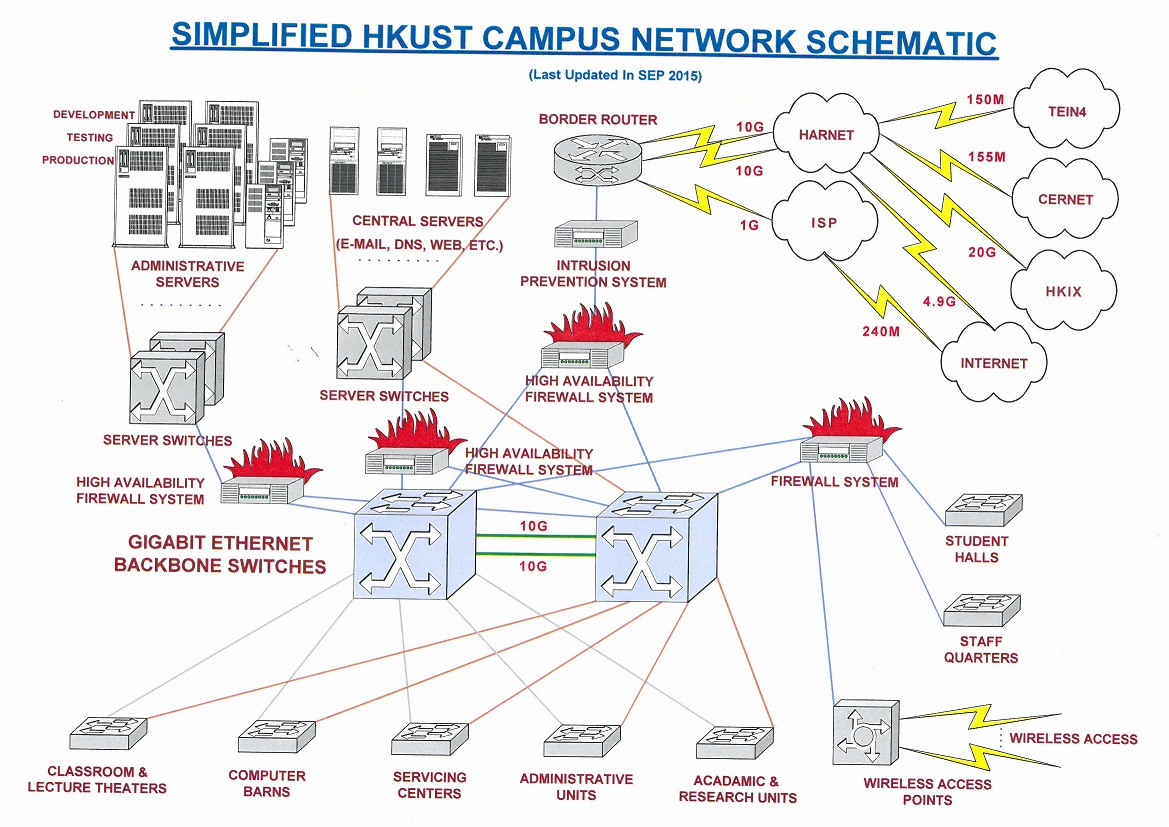ITSO develops and manages the University’s network infrastructure, building and maintaining an advanced campus network to support teaching, research and administrative activities. The department’s primary goals are to:
- Build a state-of-the-art network which employs the latest networking technologies and adheres to international networking standards.
- Install and maintain a flexible and sustainable cabling plant.
- Develop a well-designed network which is reliable, robust, scalable, and at the same time adaptable to future technologies as well as the changing requirements of the University.
- Network every part of the University, including student halls and staff quarters, to make “information at your fingertips” become a reality.
- Support the mobile paradigm shift and facilitate e-learning by developing a versatile wireless infrastructure with widespread campus coverage.
Changing Needs
With the increase in demand for streaming video and data intensive e-learning applications, the Campus Network Infrastructure is faced with the challenge of supporting high-bandwidth applications and a growing number of desktops, each with gigabit connectivity.
There is also a growing need to support server virtualization and cloud-based environments. Server virtualization and cloud computing are helping to revolutionize the world of information and communication technologies by enabling a convenient way to share resources (e.g. servers, storage devices, desktops, and applications) over the network. These are driving the need for speed and low latency in addition to high bandwidth.
Technical Structure
HKUST Campus Network is currently based on a routed network topology with a high-speed switched 10-Gigabit Ethernet campus backbone. It consists of multiple gigabit core backbone switches (Cisco Nexus 7010 and Cisco Catalyst 6509) running on a switched network fabric architecture that can scale beyond 9 terabits per second (Tbps).
The University’s backbone network infrastructure is based on an extensible architecture that can support the emerging 40- and 100-Gigabit Ethernet technology. This architecture also enables the convergence of a data network and storage area network (SAN) with the support of fiber channel over ethernet (FCoE) technology, which consolidates SAN-based fiber channel traffic and network data traffic on a unified network fabric.
Connected to the backbone core switches are 300-plus edge switches, installed in 170-plus wiring closets with Gigabit Ethernet (1,000 Mbps) or 10-Gigabit Ethernet (10,000 Mbps) uplinks. These edge switches then link up numerous desktop switches, which provide desktop client connectivity supporting a speed of 100 Mbps or 1 Gbps.
A simplified network schematic diagram of the Campus Network is illustrated below:

